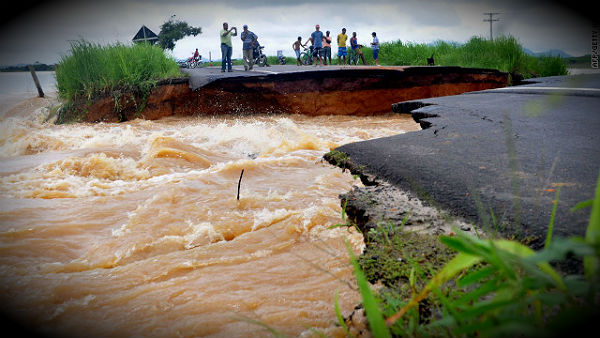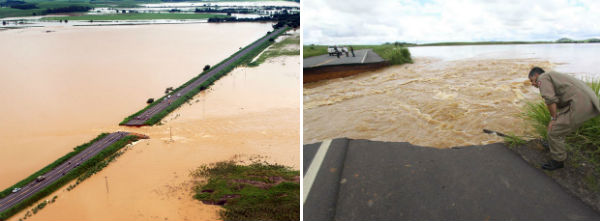Landslides and floods hit Brasil – Entire state of Rio de Janeiro on high alert

About 4000 people evacuated from their homes early on Thursday because of a broken dike (dam to contain the water of rivers) in Campos, North Fluminense, Brasil. On Wednesday the level of the Paraiba do Sul River reached 10.90 meters. Normal level at this time of year is usually 7-8 meters. Six municipalities of Rio de Janeiro declared a state of emergency after flooding caused by heavy rains that hit slab Muriaé, Itaperuna, Cardoso Moreira, Italva, Miracema and St. Anthony of Padua. All are in the North and Northwest Fluminense. The level of some major rivers rose further. The number of people who had to leave the house now stand at about 35 000.

The entire state of Rio de Janeiro is on high alert for the occurrence of more rain during the weekend. According to State Civil Defense the hardest hit areas are north and northwest, beyond the mountains and the Metropolitan Region of Rio.


Rain continued to pour down Tuesday over the south-eastern Brazilian states of Minas Gerais and Rio de Janeiro, where it caused floods and mudslides that affected thousands. Since the rainy season started in October, 52 towns have decreed a state of emergency. The towns of Petropolis, Teresopolis and Nova Friburgo, which were badly hit by last year’s mudslides and flooding, are on the alert this year too. In the city of Rio de Janeiro itself, rain caused chaos at Santos Dumont airport, leading to the cancellation of one third of the flights scheduled for Monday. According to the Secretary of Defense Civilian St. Anthony of Padua, Angelo Alberto Figueiredo, only two areas of the city were not affected by flooding. The level of the River Dove, he said, reached 5.4 meters, almost two meters above the limit. The city hospital was evacuated before the flood that hit the spot.
The Bom Jesus Itabapoana in the Northwest Fluminense, is in a state of high alert, according to the Municipal Civil Defense. The river has risen one meter and 45 centimeters while ussualy received 160 mm of rain in 24 hours, day 2 to 3 days. This water takes about 36 hours to reach the city.


The National Institute of Meteorology (Inmet) issued a warning this afternoon for the chance of rain showers, moderate to strong in the north and north-west, the regions most affected by the rains in Rio de Janeiro. According to Inmet, may also occur “significant earnings” of rain in the cities that make the border with Minas Gerais, as well as municipalities in the mountainous region of Rio.

I just don’t get it. I’m from Paraiba, in the north of Brazil and although it’s high summer here, we also suffer flooding in our winter period.
This has been going on for years, the annual cycle of water damage and repair.
But my problem with this is that while private business and even government bodies happily give the go ahead for massive civil and private building projects, public facilities – and I’m including major roads, dranage systems and transit, suffers from an emdemic corruption and mis management, that frequently sees it underperform when needed most.
In less that 3 years the world will be coming to Brazil. And in my state, Paraiba, we’ll probably be experiencing storms at least as bad as this. I sincerely hope the World Cup won’t be a side show to the regular destruction we see every year up here in north Brazil…